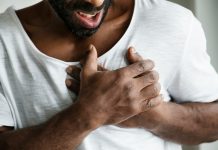
Cell therapy for heart regeneration, while promising, has been hampered by issues with long-term survival of the transplanted cells.
In a new study, researchers found a technique that combines three different types of cells in a 3-D cluster could reduce scar tissue and improve heart function after a heart attack.
The technique is called CardioCluster.
The researchers found the cell clusters improve heart function because they have much better retention rates compared to single-cell injections—the clusters persisted inside the heart walls of mice models for as long as five months after transplantation, a big advancement.
The research was conducted by a team at the San Diego State University Heart Institute.
In the study, the team designed a 3-D cluster of cells that would interact with each other and stick together to solve the challenges in getting injected cells to persist and survive inside the heart walls.
The design takes advantage of the inherent beneficial attributes of three distinct cardiac cell types, each known to possess beneficial properties that blunt heart disease in their own unique way.
The cluster combination comprises mesenchymal stem cells that help communicate and support other cells, endothelial progenitor cells which line the insides of blood vessels, and cardiac interstitial cells which are key to forming cardiac tissue.
One reason for their high rates of retention and longevity is that they were cultured together before injection, and this familiarity maximizes cell-to-cell interaction.
The team says CardioClusters closely mimic the natural environment within the human body much better than 2-D cultured single cells that are easily pumped out of the heart.
Their larger surface area as a cluster helps with retention.
When the team subjected the cluster cells to stress tests, the outer cells survived better. But when tested separately, about 50% of the cardiac interstitial cells died.
The team says each cell type within the cluster plays a specific role—the mesenchymal stem cells are the glue, the cardiac interstitial cells are the brain, and the endothelial progenitor cells are the highway on which nutrients travel which keeps the cluster alive.
The clusters can be modified and optimized for different needs, and cell ratios can be tweaked, which will form the next step in their research.
One author of the study is Mark Sussman, a distinguished professor of biology.
The study is published in Nature Communications.
Copyright © 2020 Knowridge Science Report. All rights reserved.



